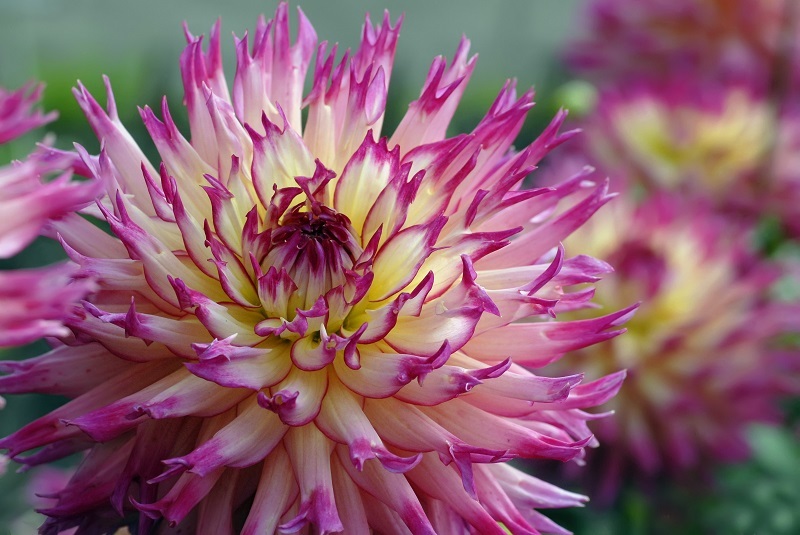From Soil to Bloom: Caring for Hydrangeas
Posted on 18/08/2025
From Soil to Bloom: Caring for Hydrangeas
Hydrangeas are cherished in gardens the world over for their spectacular blooms and elegantly lush foliage. Whether you're captivated by the mophead's voluminous florals, the delicate lacecap's intricate petals, or the robustness of the panicle variety, nurturing hydrangeas from soil to bloom rewards you with an enchanting floral display. In this comprehensive guide, you'll discover all you need to know about growing healthy hydrangeas--from understanding their unique soil requirements to encouraging abundant, vibrant blooms.
Understanding Hydrangeas: An Overview
Hydrangeas belong to the genus Hydrangea and embrace over 70 species. The most popular varieties for home gardens include:
- Hydrangea macrophylla (Bigleaf hydrangea, Mophead, Lacecap)
- Hydrangea paniculata (Peegee or Panicle hydrangea)
- Hydrangea arborescens (Smooth hydrangea, e.g., 'Annabelle')
- Hydrangea quercifolia (Oakleaf hydrangea)
- Hydrangea serrata (Mountain hydrangea)
Each type not only offers distinct aesthetics but also has unique needs when it comes to hydrangea care. By getting to know your plant, you set the foundation for successful growth.

Choosing the Right Site for Your Hydrangeas
Sunlight Requirements
Most hydrangea species flourish best in partial sun--preferably morning sunlight and afternoon shade. However, Hydrangea paniculata can tolerate more sun than others. Too much shade may result in fewer blooms, while too much sun can scorch their leaves.
Shelter and Microclimate
Hydrangeas prefer sites sheltered from harsh winds, which can desiccate foliage and damage delicate flowers. Good airflow aids in disease prevention but avoid overly exposed locations.
Soil Preparation: The Foundation for Success
Characteristics of Ideal Hydrangea Soil
- Well-drained yet moisture-retentive: Hydrangeas dislike soggy roots but need steady moisture.
- Rich in organic matter: Compost, leaf mold, and well-rotted manure encourage vigorous growth.
- Slightly acidic to neutral pH: Bigleaf hydrangeas can change bloom color depending on soil acidity (more on that later).
Testing and Amending Your Soil
Before planting, test your soil's pH and fertility. Home kits are available at garden centers. If the soil is heavy clay, incorporate organic matter or coarse sand to boost drainage. For sandy soils, organic matter helps retain moisture. Aim for a pH between 5.5 and 6.5 for most hydrangeas.
Planting Hydrangeas: Step-by-Step
When to Plant
- Early spring or fall are ideal, ensuring hydrangeas can establish roots before hot or cold extremes.
How to Plant Hydrangeas
- Dig a hole twice as wide and as deep as the root ball.
- Mix in compost with the removed soil.
- Gently loosen the roots before placing the plant in the hole.
- Backfill, water thoroughly, and add mulch to retain moisture and suppress weeds.
Spacing is important--allow at least 3-10 feet between plants depending on species and variety, to ensure healthy airflow and room for growth.
Watering Hydrangeas for Optimal Growth
How Much Water Do Hydrangeas Need?
Hydrangeas crave consistent moisture but hate standing in water. Here's what you need to remember:
- Water deeply 1-2 times per week, providing about 1 inch of water. Adjust frequency during extreme heat or drought.
- Always water at the base to avoid wetting the leaves, which can encourage disease.
- Mulch helps retain soil moisture--apply a 2-3 inch layer, but keep it away from the stems to prevent rot.
Signs of Overwatering or Underwatering
- Wilting, yellowing leaves can indicate underwatering but can also occur with soggy roots.
- If your soil feels constantly wet and leaves are limp, cut back on watering and improve drainage.
Fertilizing Hydrangeas: Nourishing Lush Growth
Types of Fertilizer
Hydrangeas do well with a balanced, slow-release fertilizer. A formula such as 10-10-10 (Nitrogen-Phosphorus-Potassium) supports even growth and blooming:
- Apply fertilizer in early spring as new growth emerges.
- For some varieties, a second, lighter feeding in mid-summer boosts blooms.
Always follow package instructions to avoid "burning" the roots or producing excessive soft growth vulnerable to disease.
Special Note: Adjusting Bloom Color in Bigleaf Hydrangeas
With Hydrangea macrophylla (mophead and lacecap types), soil pH affects bloom color:
- Acidic soil (pH below 5.5): Blue flowers
- Neutral to alkaline soil (pH above 6.0): Pink flowers
To encourage blue flowers, add aluminum sulfate to your soil. For pink, add garden lime to raise the pH. Changes are gradual and may take a season or two to see results.
Mulching and Weed Control
Mulch is essential in hydrangea care--it helps control weeds, conserves soil moisture, and regulates soil temperature. Apply organic mulch like bark, pine needles, or shredded leaves 2-3 inches deep, leaving space around the stems.
Pruning Hydrangeas: Timing and Technique
Why Prune Hydrangeas?
- Maintain shape and size
- Encourage robust blooming
- Remove dead, damaged, or diseased wood
When to Prune: It Depends on the Species
- Hydrangea macrophylla blooms on old wood. Prune right after flowering, typically before August.
- Hydrangea arborescens and paniculata bloom on new wood. Prune hard in late winter or early spring for best blooms.
- Oakleaf hydrangeas need only minimal shaping, also pruned after flowering.
How to Prune
- Remove any dead or crossing stems at the base.
- Cut back stems to a pair of healthy buds.
- Avoid over-pruning, particularly on old-wood bloomers, to ensure next season's flowers.
Common Hydrangea Problems and Solutions
Pests
- Aphids: Knock off with water spray, or use insecticidal soap.
- Scale insects: Scrape gently or treat with horticultural oil.
- Spider mites: Increase humidity and use miticides if needed.
Diseases
- Powdery mildew: Promote air circulation and avoid overhead watering.
- Leaf spots: Remove infected leaves and ensure good garden hygiene.
- Root rot: Prevent by ensuring good drainage and avoiding overwatering.
Bloom Issues
- No blooms: Pruning at the wrong time or late frosts can remove flower buds. Protect plants or prune at appropriate times.
- Faded colors or small blooms: Feed with balanced fertilizer and check soil conditions.
Hydrangea Varieties and Recommendations
- For beginners: 'Annabelle' (Hydrangea arborescens) is hardy, reliable, and easy to grow.
- Color lovers: 'Endless Summer' (Hydrangea macrophylla) blooms on old and new wood, giving longer display and reliable blooming.
- Cold climates: 'Limelight' (Hydrangea paniculata) tolerates freezing winters and sun yet still produces large, showy flowers.
Seasonal Maintenance for Hydrangeas
Spring
- Check for winter dieback and prune as needed.
- Fertilize and mulch.
- Begin regular watering if rainfall is low.
Summer
- Maintain consistent watering.
- Remove spent blooms (deadheading) to encourage fresh growth and a tidy appearance.
- Monitor for pests and diseases.
Autumn
- Allow some blooms to fade naturally--hydrangea flowers add winter interest.
- Add mulch for root protection as temperatures drop.
Winter
- In colder areas, protect roots with extra mulch or burlap wrap; especially important with young plants.
- Avoid pruning now so that flower buds are not removed.
Creative Uses for Hydrangeas in the Garden
- Foundation plantings for a lush, welcoming look.
- Backdrops or borders in perennial beds.
- Accent focal points with showy varieties in mixed shrubbery.
- Containers--smaller hydrangea varieties thrive on patios or balconies.
- Cut flower arrangements--hydrangeas are prized for fresh and dried bouquets.

Frequently Asked Questions about Hydrangea Care
How do I make hydrangeas bloom better?
Provide proper sunlight, consistent watering, balanced fertilizer, and avoid late-summer or fall pruning for old-wood bloomers. Mulch and soil pH also influence performance.
Can hydrangeas grow in pots?
Yes! Use a large container, well-draining soil, and water regularly. Choose dwarf or compact hydrangea varieties for the best results.
How do I dry hydrangea blooms?
Cut stems when blooms are mature, hang upside down in a dry, dark place, or place the stems in a vase with just a few inches of water until the petals dry naturally.
Conclusion: From Soil to Bloom--Your Hydrangea Success Story
Caring for hydrangeas is a rewarding partnership between gardener and plant. With proper soil preparation, smart planting, attentive watering, effective fertilization, and mindful pruning, you can transform any garden with extravagant, healthy hydrangea flowers. Adopt these tips for growing hydrangeas and you'll enjoy spectacular blooms year after year--proof that attentive care, from soil to bloom, truly makes all the difference.
Start your hydrangea journey today and let your garden flourish with bountiful color and charm!
Latest Posts
The Ultimate Orchid Care Handbook
From Soil to Bloom: Caring for Hydrangeas
Effortless Office Plants with Low Maintenance Needs






